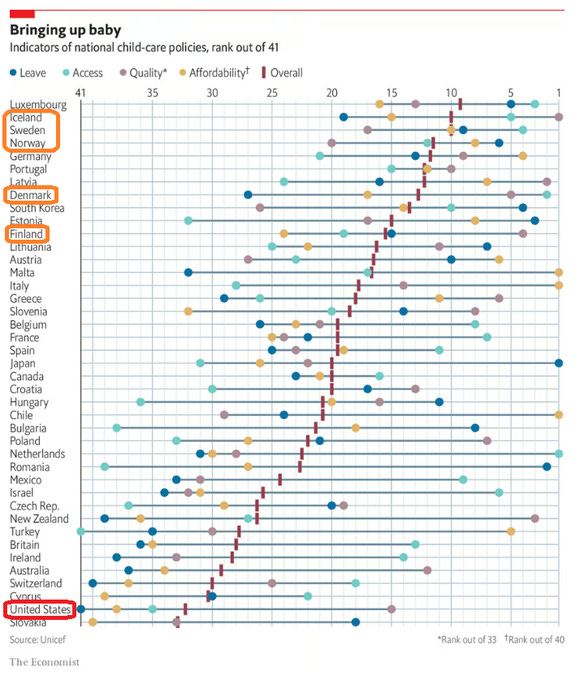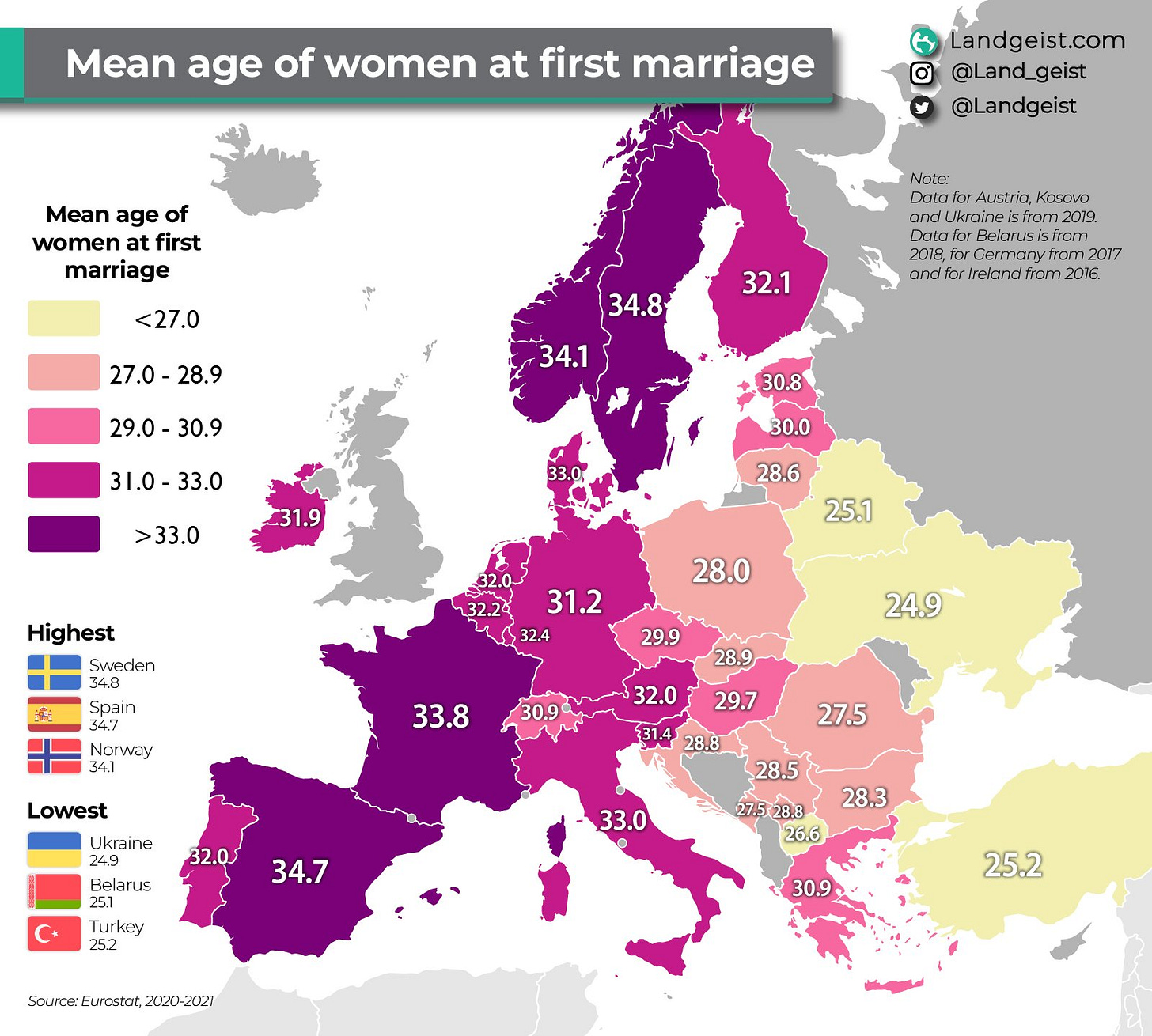Understanding plunging Nordic fertility
A look at how cultural forces can overpower pronatal policy.
For years, the Nordic countries had healthy birthrates that were the envy of Europe, helped in part by some of the most generous family policies in the world. No longer.
In 2015, the fertility of the Nordics averaged 1.76 births per woman, similar the 1.84 level of the US. By 2023, the fertility of the Nordic countries was just 1.44, well below the 1.62 of the US today. This though Nordic child policy is what parents in the United States dream of. Why?
Religiosity helps explain falling Nordic fertility. Scandinavian countries are now among the least religious in the world, much less religious than the least religious US state.
In Scandinavian countries, most people are members of a church, but almost nobody actually attends anymore.
This helps explain falling birthrates, since religiosity is a very strong predictor of fertility around the world.
In Nordic countries, young people gain independence earlier than anywhere else. This should help translate into much higher birthrates.
Why doesn't it? Because a singles culture dominates.
Although >90% of Nordics get their own place in their 20s, most marry late if at all.
The Scandinavian countries are surely an ideal place to raise children. They consistently have the highest self-reported happiness scores and also the most generous policies for families.
While those pro-family policies are a very good thing, they are countered by a loss of the cultural forces that once led young people to form families, principally religious faith and marriage.
These days young people in Scandinavia spend many years in independent singlehood, more than anywhere else in the world. When marriage comes late or not at all, birthrates will usually be low.
Given the huge positives already present in Scandinavia, if a pro-family culture were to develop (or perhaps we should say return), it is likely that much higher birthrates would follow. The external conditions are already in place.










